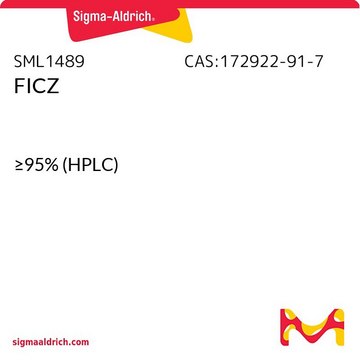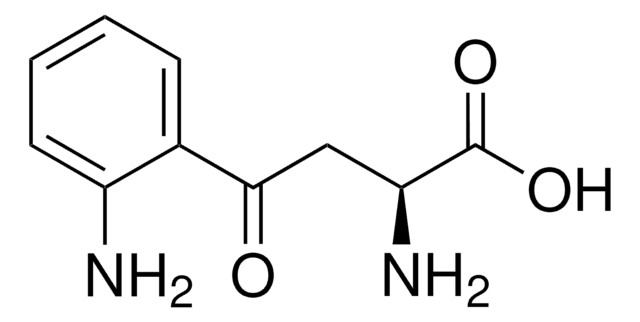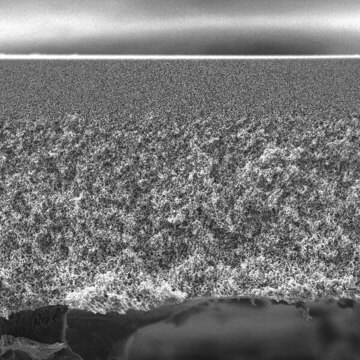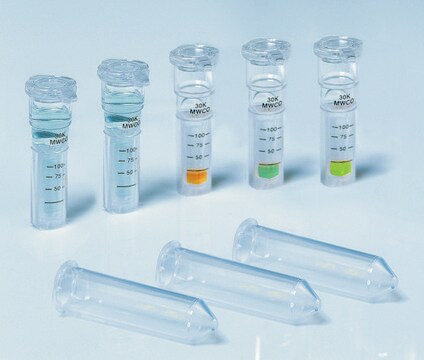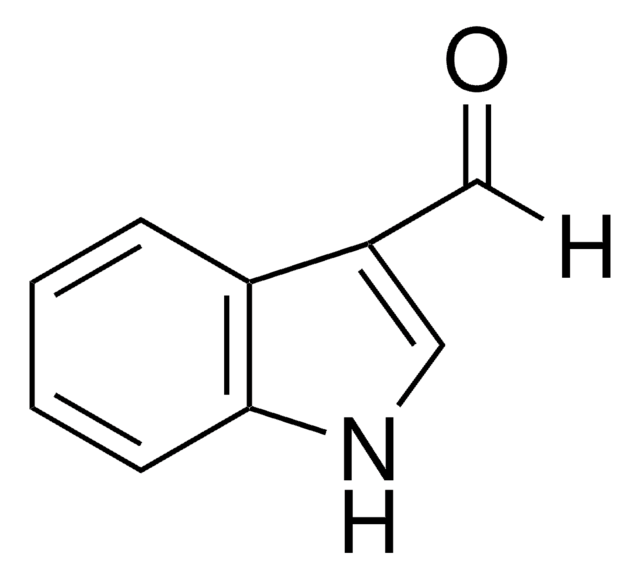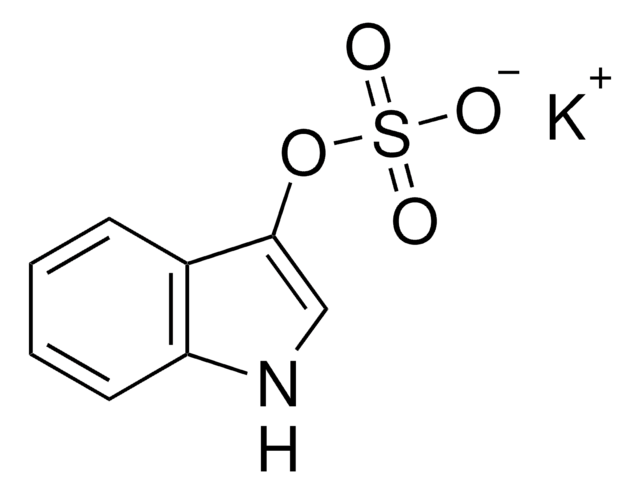C8124
CH-223191
≥98% (HPLC), powder, AhR antagonist
Sinônimo(s):
1-Methyl-N-[2-methyl-4-[2-(2-methylphenyl)diazenyl]phen yl-1H-pyrazole-5-carboxamide, 2-Methyl-2H-pyrazole-3-carboxylic acid (2-methyl-4-o-tolylazo-phenyl)-amide
About This Item
Produtos recomendados
Nome do produto
CH-223191,
Ensaio
≥98% (HPLC)
Nível de qualidade
Formulário
powder
cor
orange-brown
solubilidade
DMSO: ≥20 mg/mL
temperatura de armazenamento
2-8°C
cadeia de caracteres SMILES
Cc1cc(ccc1NC(=O)c2ccnn2C)\N=N\c3ccccc3C
InChI
1S/C19H19N5O/c1-13-6-4-5-7-17(13)23-22-15-8-9-16(14(2)12-15)21-19(25)18-10-11-20-24(18)3/h4-12H,1-3H3,(H,21,25)/b23-22+
chave InChI
LKTNEXPODAWWFM-GHVJWSGMSA-N
Aplicação
Ações bioquímicas/fisiológicas
Características e benefícios
Código de classe de armazenamento
11 - Combustible Solids
Classe de risco de água (WGK)
WGK 3
Ponto de fulgor (°F)
Not applicable
Ponto de fulgor (°C)
Not applicable
Escolha uma das versões mais recentes:
Já possui este produto?
Encontre a documentação dos produtos que você adquiriu recentemente na biblioteca de documentos.
Os clientes também visualizaram
Artigos
We offer many products related to non-steroid nuclear receptors for your research needs.
Conteúdo relacionado
We offer a variety of small molecule research tools, such as transcription factor modulators, inhibitors of chromatin modifying enzymes, and agonists/antagonists for target identification and validation in gene regulation research; a selection of these research tools is shown below.
Nossa equipe de cientistas tem experiência em todas as áreas de pesquisa, incluindo Life Sciences, ciência de materiais, síntese química, cromatografia, química analítica e muitas outras.
Entre em contato com a assistência técnica